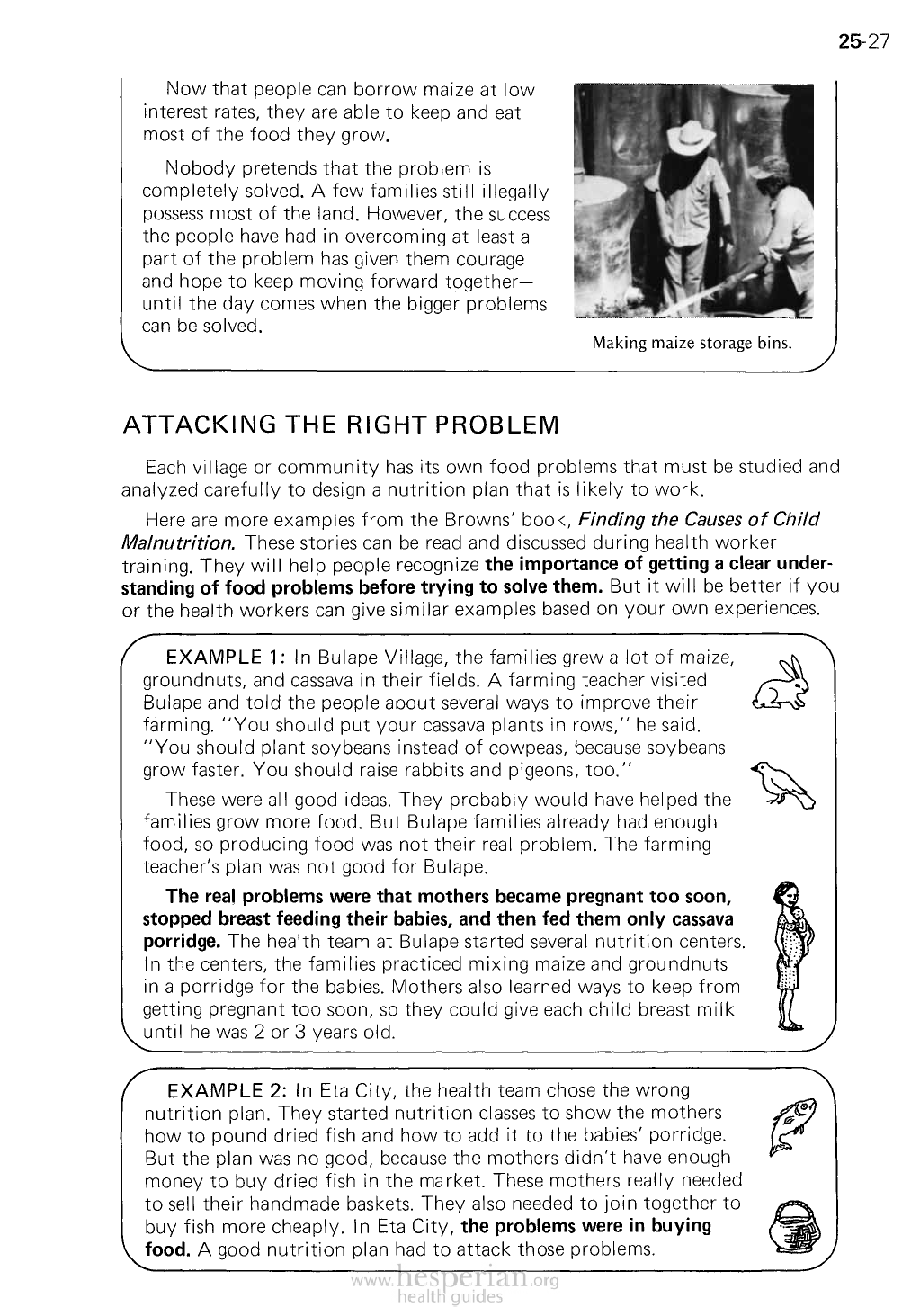
Now that people can borrow maize at low
interest rates, they are able to keep and eat most
of the food they grow.
Nobody pretends that the problem is
completely solved. A few families still illegally
possess most of the land. However, the success
the people have had in overcoming at least a
part of the problem has given them courage and
hope to keep moving forward together— until
the day comes when the bigger problems can
be solved.
25-27
Making maize storage bins
ATTACKING THE RIGHT PROBLEM
Each village or community has its own food problems that must be studied and
analyzed carefully to design a nutrition plan that is likely to work.
Here are more examples from the Browns’ book, Finding the Causes of Child
Malnutrition. These stories can be read and discussed during health worker training.
They will help people recognize the importance of getting a clear understanding
of food problems before trying to solve them. But it will be better if you or the
health workers can give similar examples based on your own experiences.
EXAMPLE 1: In Bulape Village, the families grew a lot of maize,
groundnuts, and cassava in their fields. A farming teacher visited
Bulape and told the people about several ways to improve their
farming. “You should put your cassava plants in rows,” he said. “You
should plant soybeans instead of cowpeas, because soybeans grow
faster. You should raise rabbits and pigeons, too.”
These were all good ideas. They probably would have helped the
families grow more food. But Bulape families already had enough
food, so producing food was not their real problem. The farming
teacher’s plan was not good for Bulape.
The real problems were that mothers became pregnant too
soon, stopped breast feeding their babies, and then fed them
only cassava porridge. The health team at Bulape started several
nutrition centers. In the centers, the families practiced mixing maize
and groundnuts in a porridge for the babies. Mothers also learned
ways to keep from getting pregnant too soon, so they could give each
child breast milk until he was 2 or 3 years old.
EXAMPLE 2: In Eta City, the health team chose the wrong nutrition
plan. They started nutrition classes to show the mothers how to
pound dried fish and how to add it to the babies’ porridge. But the
plan was no good, because the mothers didn’t have enough money
to buy dried fish in the market. These mothers really needed to sell
their handmade baskets. They also needed to join together to buy fish
more cheaply. In Eta City, the problems were in buying food. A
good nutrition plan had to attack those problems.